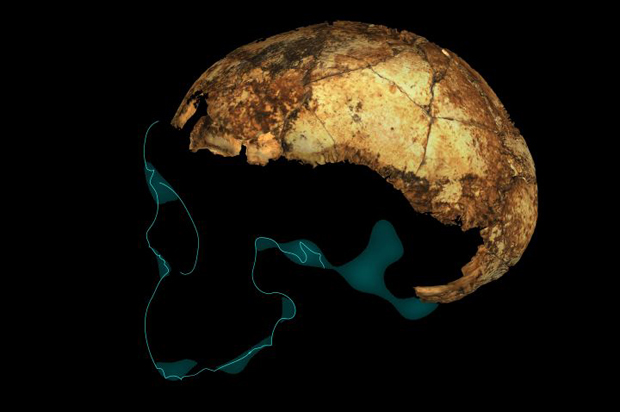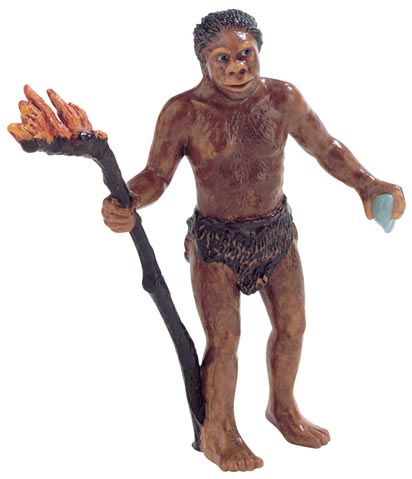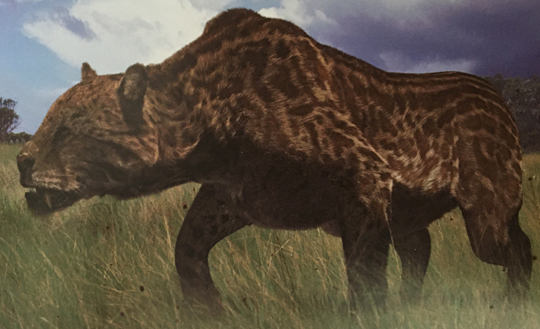Homo erectus Evolved Earlier Than Previously Thought
A partial skull, painstakingly reconstructed from more than 150 fragments has revealed that Homo erectus existed at least 100,000 years earlier than previously thought. In addition, the fossil remains, excavated from the Drimolen Fossil Hominin site in the Cradle of Humankind, northwest of Johannesburg (South Africa), suggest that this hominin evolved in Africa and not in Asia.
The Reconstructed Partial Skull of the Homo erectus Infant from the Drimolen Fossil Hominin Site

Picture credit: La Trobe University (Australia)
The African Origins of Homo erectus
This week, an academic paper has been published in “Science” detailing the research into a fragmented hominin skull representing a toddler that was approximately 2-3 years old. The Drimolen Fossil Hominin site was discovered in 1992 by geologist André Keyser. The sediments represent cave deposits but as the rocks that made up the caves have been eroded away, the breccias in which the fossils are located are exposed. The site is one of the most important in the world for early hominin remains, with more than a hundred individual fossil specimens described to date.
Lead author of the study and project director Professor Andy Herries (La Trobe University), explained that it had taken five years to excavate the specific fossil site and retrieve all the skull fragments.
He stated:
“The Homo erectus skull we found, likely aged between two and three years old when it died, shows its brain was only slightly smaller than other examples of adult Homo erectus. It samples a part of human evolutionary history when our ancestors were walking fully upright, making stone tools, starting to emigrate out of Africa, but before they had developed large brains.”
Dating the Fossil Skull Fragments
The fossilised fragments, first spotted by student Richard Curtis during field work five years ago, were subjected to a variety of dating techniques including uranium-lead dating of associated flowstones, palaeomagnetism of sediments and uranium-series electron spin resonance using fossil teeth found in the same strata. Each of these different dating methods produced a constrained dating range for the site.
The fossils from the Drimolen Fossil Hominin Main Quarry were between 2.04-1.95 million years of age. This indicates that the skull fragments are around two million years old, suggesting that Homo erectus existed some 100,000 to 200,000 years earlier than previously thought. In addition, prior to the publication of this paper, the oldest H. erectus fossil specimen known had been found in Georgia (Dmanisi). It had been dated to between 1.85 and 1.78 million years ago and consequently scientists had argued that Homo erectus evolved in Asia, but this newly described, much older fossil skull supports the theory, that like most other types of hominid, H. erectus originated in Africa.
Professor Herries explained that unlike the world today, where our species (Homo sapiens), is the only hominin in existence, in southern Africa around two million years ago, our direct ancestors shared the environment with other hominins and closely related species.
A Model of H. erectus (Bullyland Figure)

The picture (above) shows a hominin figure from the Bullyland model range.
To view this range of figures: Bullyland Figures.
The professor stated:
“We can now say Homo erectus shared the landscape with two other types of humans in South Africa, Paranthropus and Australopithecus. This suggests that one of these other human species, Australopithecus sediba, may not have been the direct ancestor of Homo erectus, or us, as previously hypothesised.”
Different Hominins with Different Adaptations Sharing the Same Environment
The paper, is one of a number published recently that leads to the conclusion that several early types of human shared the same environment. Palaeoanthropologists now have an intriguing question to answer – how did these different species, with quite different adaptations co-exist?
Co-author of the scientific paper, Dr Justin Adams (Monash University, Melbourne, Australia), suggested that the new date for the Drimolen skull raised fascinating questions about how different species survived in the same landscape, but eventually as habitats changed, what role did Homo erectus play, if any in the extinction of the other species. Furthermore, how did Homo erectus survive and yet australopithecines and Paranthropus did not?
Similar Trends in Mammal Species from the Pleistocene
The authors of the paper, note a similar trend in other mammal species in southern Africa during the Pleistocene Epoch. For instance, more than one species of prehistoric felid from the genus Dinofelis has been recorded from this area. South African fauna during the Early to Middle Pleistocene comprised a mixture of different evolutionary lineages, a mixed community of ancient and more modern mammalian species.
An Illustration of a Prehistoric Cat – Dinofelis
Picture credit: BBC
The publication of this paper and the study into Homo heidelbergensis reported upon by Everything Dinosaur earlier this week, suggests that we still have a lot to learn about our origins.
The H. heidelbergensis article: Homo heidelbergensis Younger Than Previously Thought.
The Everything Dinosaur website: Everything Dinosaur.







Leave A Comment